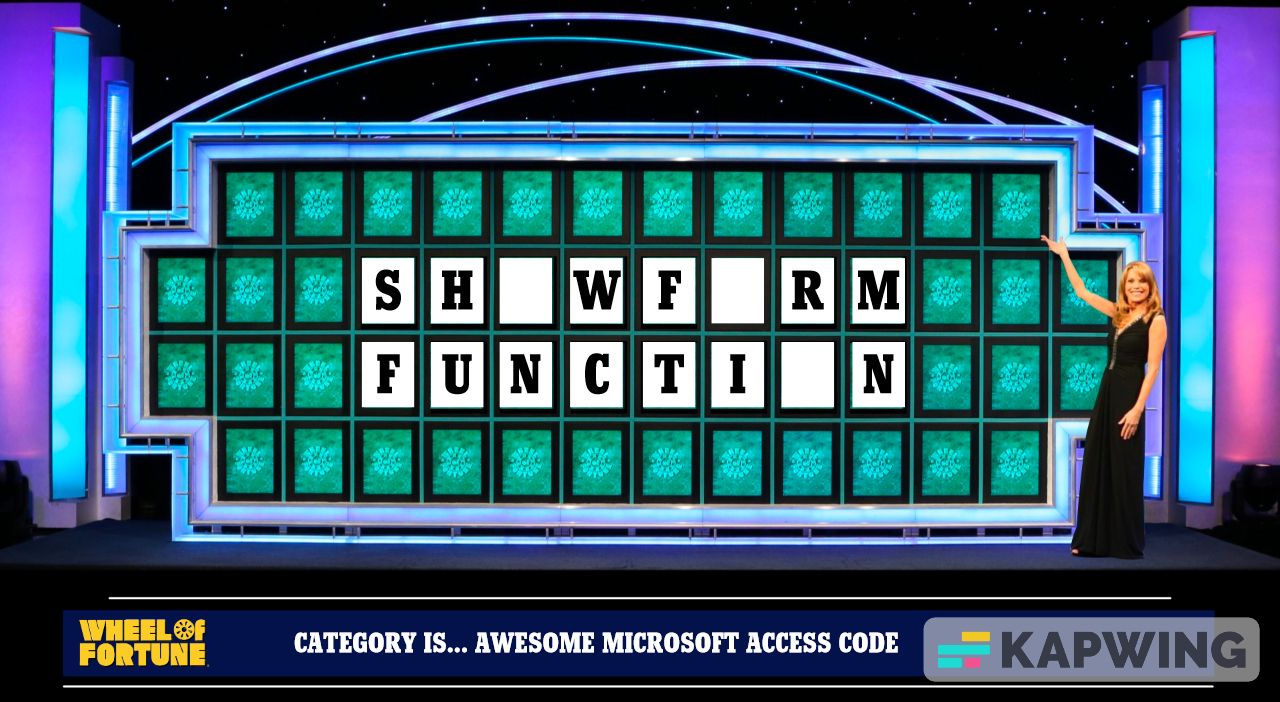Evolution of a Function: ShowForm()
Code is a living thing. Letting it grow organically over time helps ensure that you get exactly the features you need. My ShowForm() function is a prime example.

This is the introduction to a series on the evolution of my ShowForm() function.
- Part 1: Minimum Viable Product (MVP)
- Part 2: Multiple Form Instance Support
- Parts 3+: (Not yet published)
There are 4 keys to building generic solutions in code:
- Avoid premature generalization by sticking to the Rule of Thrice
- Make sure any additional time spent building a generic solution is worth it
- Build only what you need at first; don't try to anticipate future use cases
- Maintain backward compatibility as you add features
To illustrate points 3 and 4, I'm going to take you with me on a journey through the development of one of the foundational building blocks of my Access applications: my ShowForm() function.
The ShowForm() Function
At its most basic, the ShowForm function acts as a wrapper around the built-in DoCmd.OpenForm method.
Over time, the function grew to encompass the following features:
- Simplify calling code by eliminating the View and FilterName arguments
- Avoid "Syntax error (missing operator) in query expression 'MyField = '." errors
- Force-apply new filter criteria to already-open forms*
- Restore the form being opened if it is currently minimized*
- Reveal the form being opened if it is currently hidden*
- Support multiple form instances with no change to the calling code
- Avoid creating duplicate form instances (based on WhereCondition and OpenArgs arguments)
- Automatically cascade multi-instance forms (to avoid obscuring other instances of the same form)
- Return the window handle of the newly opened form (to track specific instances of a multi-instance form)
*NOTE: Features with asterisks in the list above appear to be built into the latest versions of Access, though I swear they were missing in earlier versions (e.g., Access 2000).
Through a series of follow-up articles, I will show you how this function evolved and grew over a period of several years.
From its humble beginnings to its current grandeur, this function is a great example of the power of Just-In-Time development mixed with reverence for backwards compatibility.
The Value of Version Control
I should point out the thing that makes this article series possible is my long and consistent use of version control to maintain my code library:

Without version control, I'd be able to show you the code for the function as it is now, but I would have no way to show you how it evolved over time. Being able to see how code evolves is a powerful way to gain insight into why a piece of code works the way it does.
Image modified from Wheel of Fortune template on Kapwing.com

